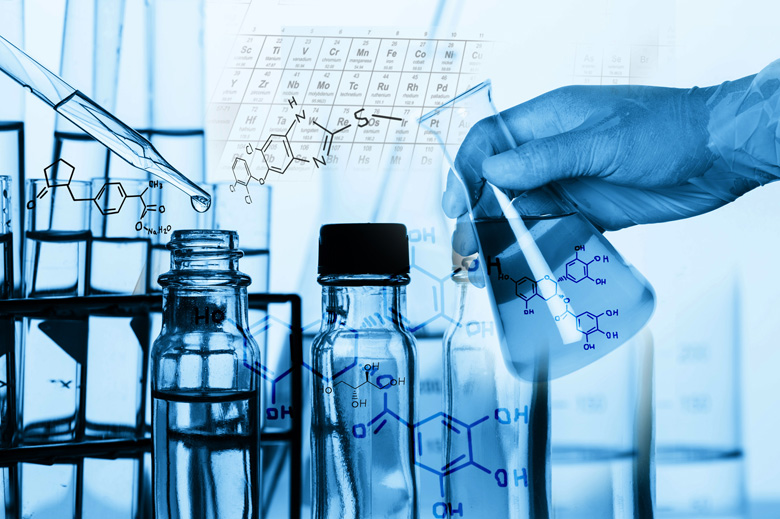Polyurethane adhesives contain urethane groups (-NHCOO-) or isocyanate groups (-NCO) in their molecular chains and are divided into two categories: polyisocyanate and polyurethane. Polyurethane adhesives achieve the purpose of bonding by reacting the isocyanate groups in the system with substances containing active hydrogen inside or outside the system to generate polyurethane groups or polyurea, thereby greatly improving the strength of the system.
Adhesives are formulated with adhesive as the main agent and various curing agents, plasticizers, fillers, solvents, preservatives, stabilizers, coupling agents and other additives. In recent years, with the rapid improvement of material research and development, various adhesives with stronger applicability have been released one after another, which has greatly enriched the adhesive market.

1. Development status
Polyurethane adhesive is a medium-to-high-grade adhesive with excellent flexibility, impact resistance, chemical resistance, abrasion resistance, and most importantly, its low temperature resistance. By adjusting the raw materials and formulas, multiple types of polyurethane adhesives suitable for bonding between various materials and for various purposes can be designed. Polyurethane adhesives were used in the military field as early as 1947. Bayer successfully applied triphenylmethane triisocyanate to the bonding of metal and rubber and used it on the tracks of tanks, laying the foundation for the polyurethane adhesive industry. Japan introduced German and American technology in 1954, began producing polyurethane adhesives in 1966, successfully developed an ethylene-based polyurethane water-based adhesive, and put it into industrial production in 1981. At present, the research and production of polyurethane adhesives in Japan are very active, and together with the United States and Western Europe, Japan has become a major producer and exporter of polyurethane. After the 1980s, polyurethane adhesives have developed rapidly and have now become an industry with a wide variety of applications.
my country developed and produced triphenylmethane triisocyanate (Lekna glue) in 1956, and soon produced toluene diisocyanate (TDI) and two-component solvent-based polyurethane adhesives. It is still the largest producer of polyurethane adhesives in my country. Variety. After that, our country successively introduced many advanced production lines and products from abroad, which required a large amount of imported polyurethane adhesives to match them, thus promoting domestic research units to accelerate the development of polyurethane adhesives. Especially after 1986, my country’s polyurethane industry entered a period of rapid development. The price of polyurethane glue has been continuously decreasing in recent years. The current price of polyurethane glue is only about 20% higher than that of chloroprene rubber, which provides conditions for polyurethane glue to occupy the chloroprene rubber market.
1.1 Production method
The production methods of polyurethane glue include solution method and solid resin dissolution method. At present, there are more than 100 companies producing polyurethane glue for shoes in mainland my country, including more than 20 large-scale companies. The production capacity of Nanguang, Bali and other companies is more than 10,000 tons/grade. Basically, they use Spanish, Germany, the United States and Taiwan import resin for dissolution to produce polyurethane glue. In view of the large number of manufacturing companies and increasingly fierce competition, in order to have technical and price advantages, some large adhesive factories have begun to build solution-method polyurethane glue production equipment, so the proportion of solution-method polyurethane glue production will decrease.
Currently, the most common polyurethane glue is solvent-based. Like neoprene, there are problems of toxicity and environmental pollution. In recent years, “triphenyl”-free polyurethane glue has appeared one after another, that is, using mixed solvents such as ketones and esters. The toxicity has been reduced, but the problem has not been fundamentally solved.
1,2 Composition classification
Polyurethane adhesives are classified according to their reaction composition and can be divided into polyisocyanate adhesives, isocyanate group-containing polyurethane adhesives, hydroxyl-containing polyurethane adhesives and polyurethane resin adhesives.
According to their uses and characteristics, they can be divided into general-purpose adhesives, food packaging adhesives, shoe adhesives, paper-plastic composite adhesives, construction adhesives, structural adhesives, ultra-low temperature adhesives, foaming adhesives, and anaerobic adhesives. Conductive adhesives, hot melt adhesives, pressure sensitive adhesives, sealed adhesives, water-based adhesives and sealing adhesives, etc.
2. Main application areas
2.1 Woodworking industry
With the rapid decrease of forest resources worldwide and the implementation of my country’s natural forest resource protection project, the assembly of small wood into large boards requires adhesives with bonding strength, durability, weather resistance and other properties that are better than the wood itself. The amount of adhesive used has become a symbol of the technological development level of the wood industry. In the past, most of the wood adhesives used were urea-formaldehyde resin, phenolic resin and melamine-formaldehyde resin with formaldehyde as the main raw material. However, due to the presence of free formaldehyde, the product will gradually emit formaldehyde gas to the surroundings during use, causing environmental pollution. The wood processing industry hasThe applied process conditions and adhesive properties are basically the same as those of solvent adhesives, which will be the future development direction. However, due to the current high price, immature application process control, and lower adhesive qualification rate than solvent adhesives, in the next 2 years It is unlikely that water-based polyurethane adhesives will replace solvent-based polyurethane adhesives in large quantities within 3 years. During this period, the market for adhesives with low “triphenyl” solvent content will remain. In the next few years, our country will vigorously research and develop new adhesive products with high technical content, high added value, and high performance, such as water-based polyurethane adhesives, water-based neoprene adhesives, high-performance and high-quality pressure-sensitive adhesives and products, VAE (vinyl acetate-ethylene) emulsion, EVA (ethylene-vinyl acetate) resin, SIS (styrene-isoprene-styrene) resin, etc., and will also focus on the development of environmentally friendly and energy-saving adhesives to comply with The laws of market development and the laws of human survival.